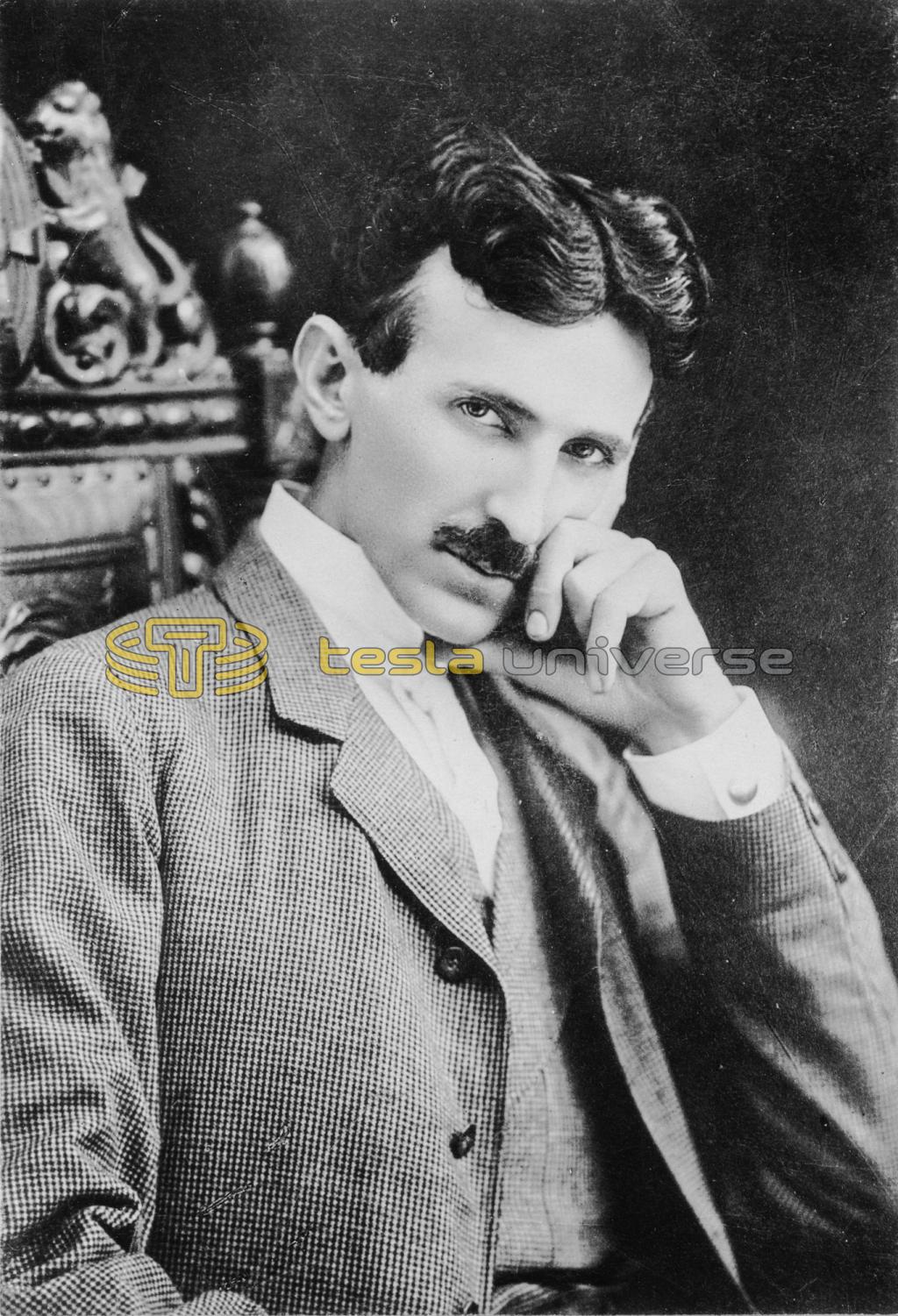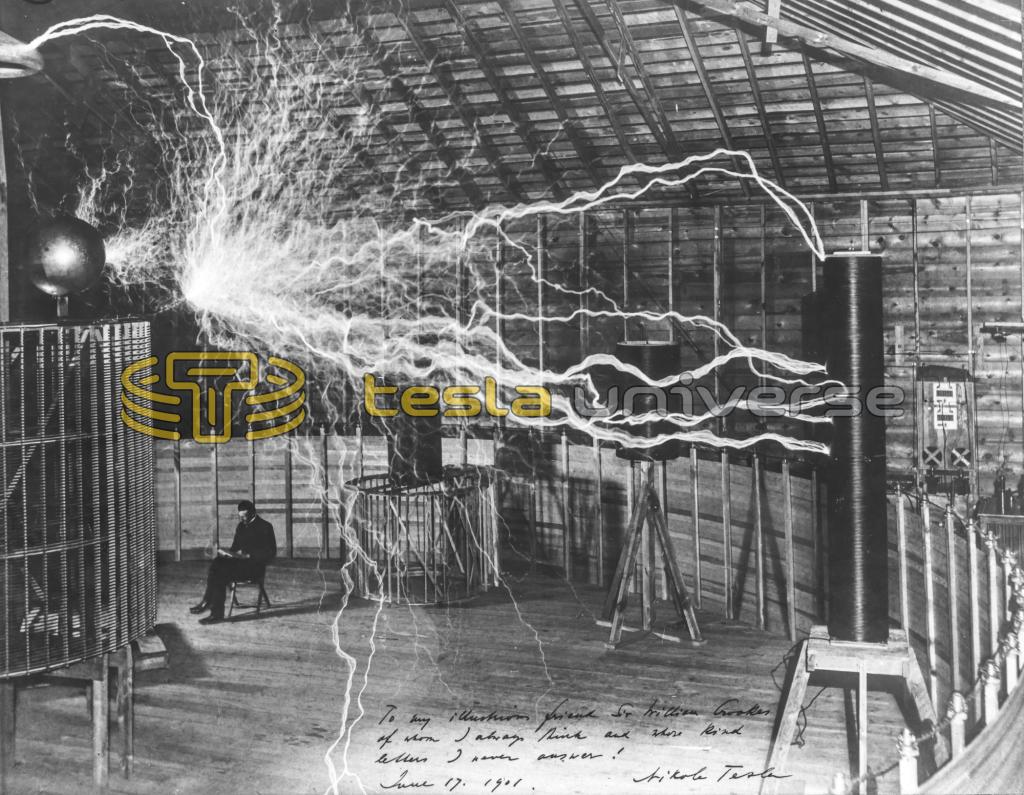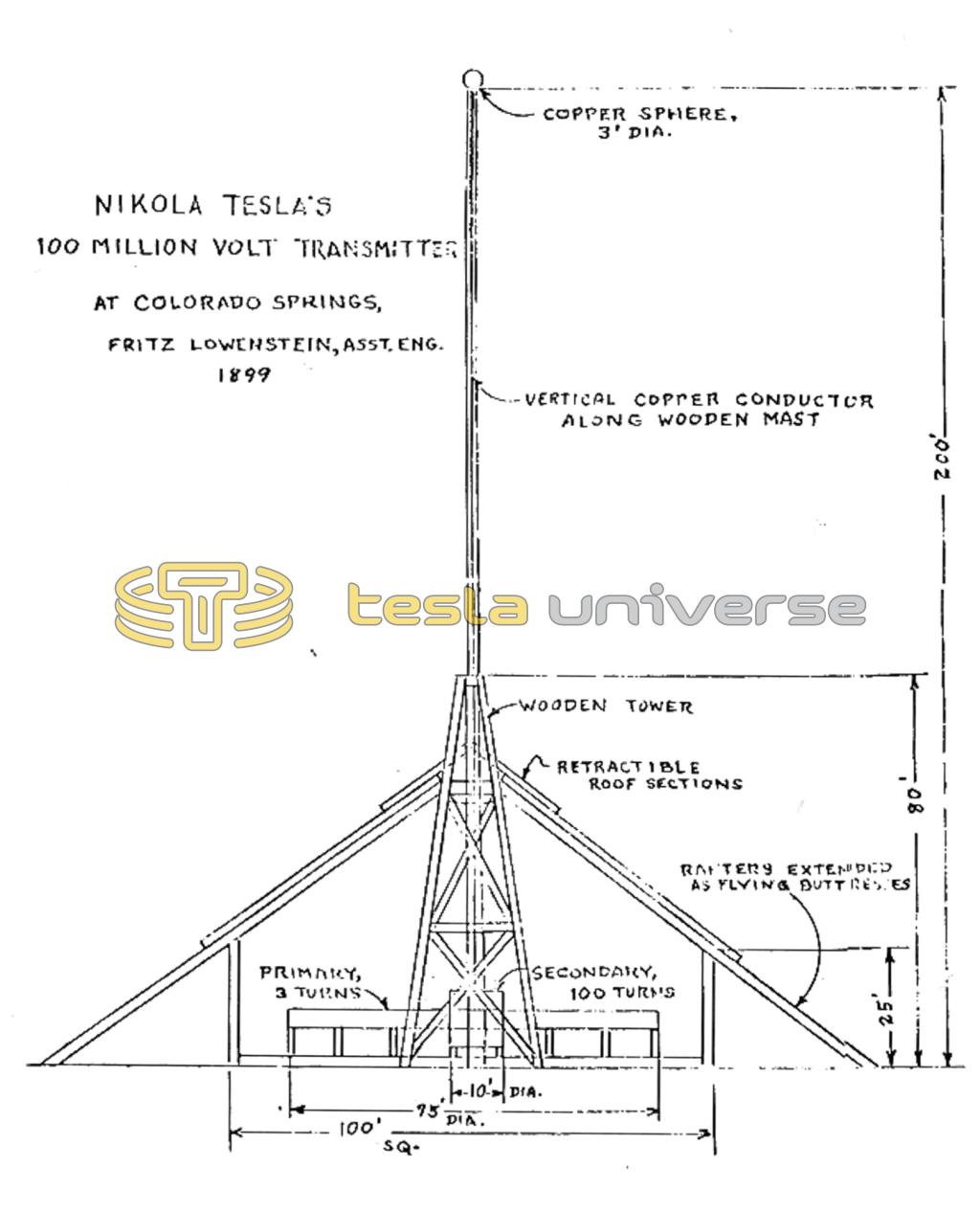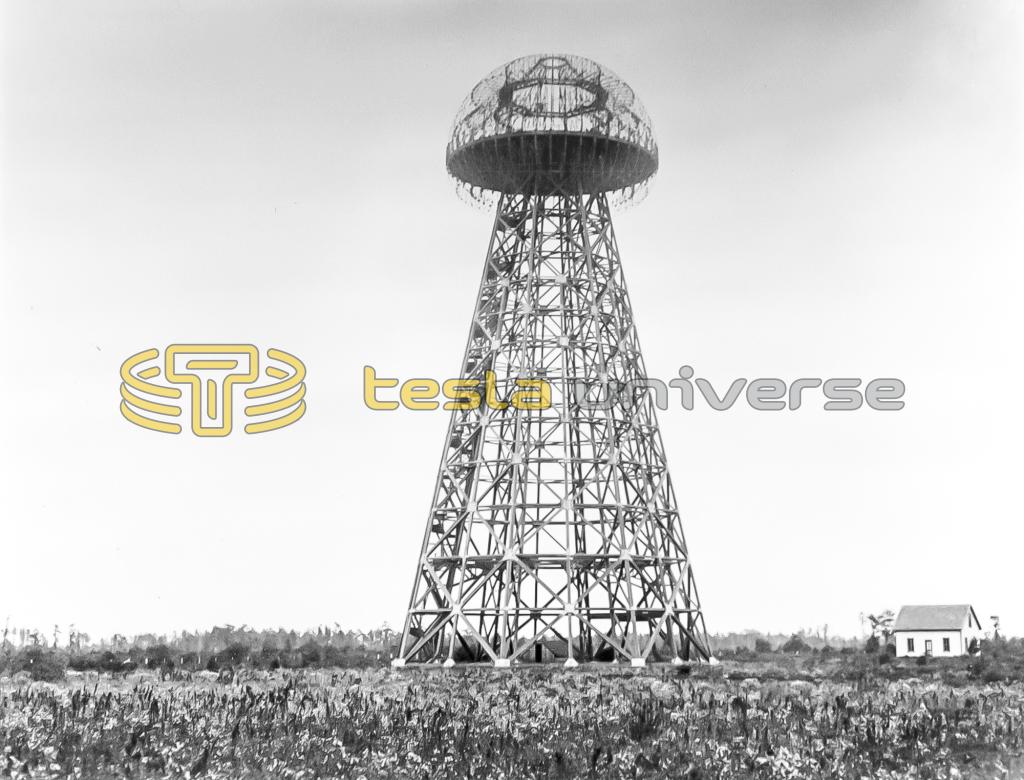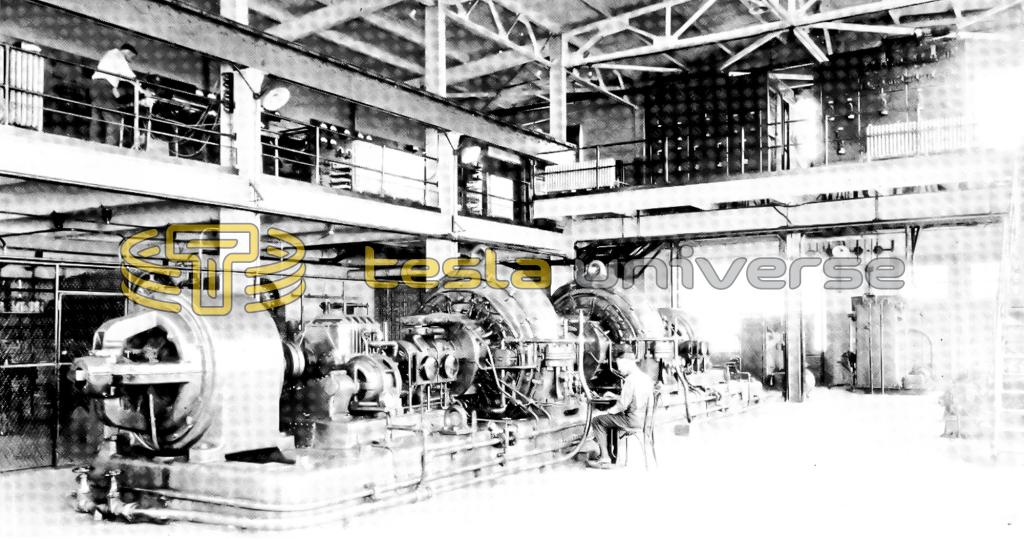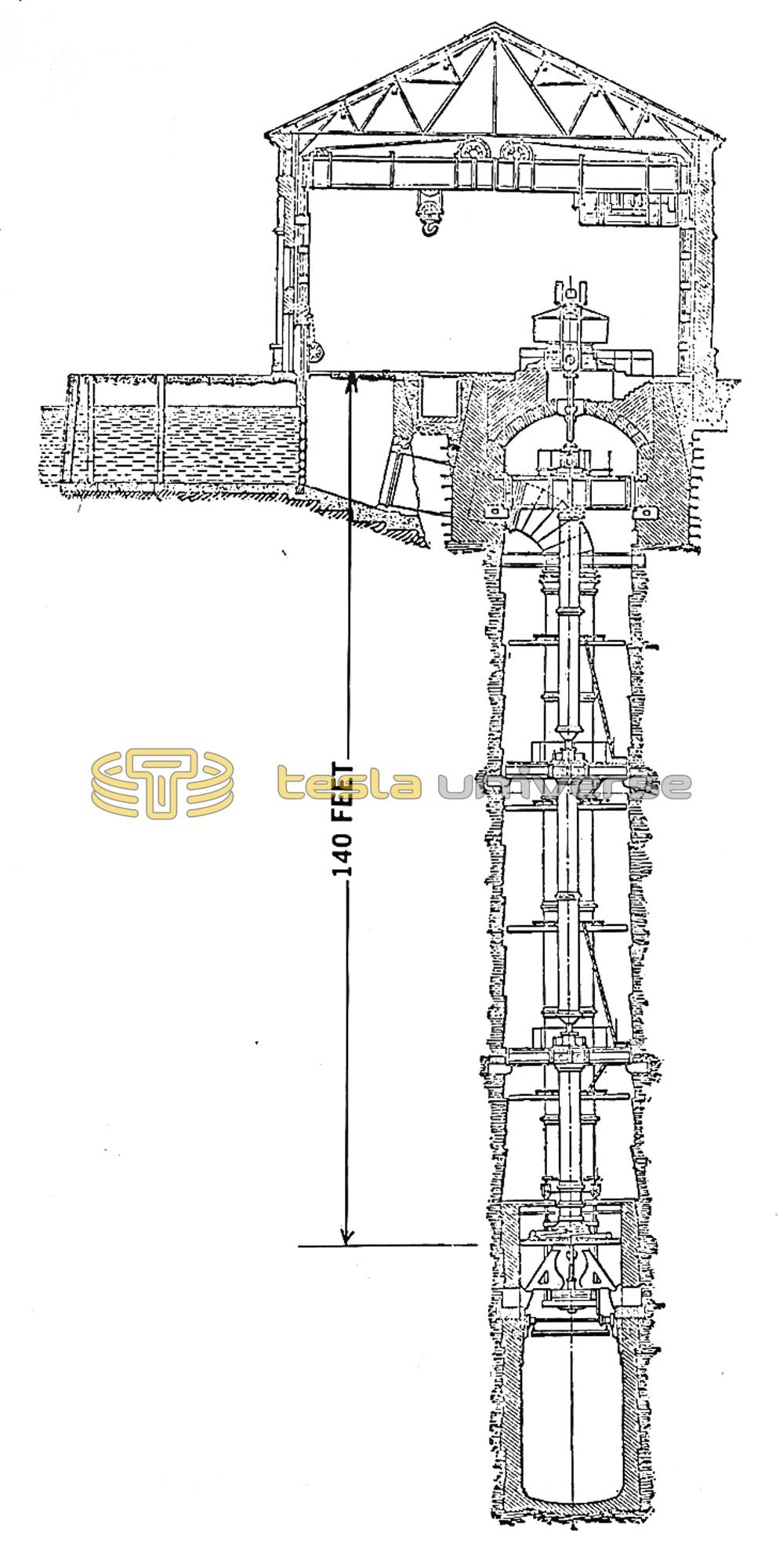
Nikola Tesla Articles
The Life and Times of Nikola Tesla
Although now largely forgotten, Nikola Tesla was either responsible for, or predicted, much of the technology we now take for granted. Here’s a look at the life and achievements of that fascinating man.
Ask any electrical engineering student today to tell you something about Nikola Tesla, and you are likely to get a blank stare. Or the counter-question: Who was Tesla? It seems preposterous that our educators should have ignored entirely the “father” of our AC age, but such is the fact. Something should be done about our technical education system.
Born July 9, 1856 in the village of Smiljan in what is now Yugoslavia, Tesla rose from relative obscurity to a top position in the scientific world. He became a millionaire at age 32 through his important inventions, but later faded into obscurity and died nearly penniless.
His father was a clergyman. His mother, though she never learned to read and write, was known in the community as an inventor of domestic labor-saving devices, and it is to her that Tesla attributed much of his inventive genius. The young Tesla, opposing his father’s urging to study for the ministry, insisted on a career in engineering. His mother encouraged him. He attended the polytechnic school at Graz (now part of Austria), specializing in physics and mathematics, and continued his education at the University of Prague. There he took a course in foreign languages so that he would be able to read foreign technical literature. He became proficient in English, French, and Italian, in addition to German and his native Serbian.
Finishing at Prague in 1880, he took a post-graduate course in Budapest, where he debated the merits of alternating current with his professors. He then went to work for a Paris telephone company, where he acquired considerable experience with DC dynamos and motors.
In those early days, direct current was universally acknowledged to be the only practical medium for generating, transmitting, and using electricity for heat, light, or power. But DC resistance losses were so great that a power plant was needed for every square mile served. Early incandescent lamps, glowing none too brightly on 110 volts even close to the power plant, became pitifully dim on the power that dribbled from the lines less than a mile away. And everyone believed that motors could run only on DC. An alternating-current motor was considered an impossibility.
That was the picture when, in 1884, young Tesla stepped off a ship in New York, his head full of ideas, and four cents in his pocket. His experience had convinced him that the commutator in direct-current motors and dynamos was an unnecessary complication, causing endless troubles. He realized that the “DC generator” actually produced AC, which was converted to DC by the commutator. Then, to get that DC to produce rotary motion in a motor, the process had to be reversed. The armature of each electric motor was equipped with a rotating switch (commutator) that changed the polarity of its magnetic poles just at the right instant as it rotated to supply AC to the motor.
To Tesla, that was sheer nonsense. It seemed much more logical to eliminate the commutator at both generator and motor, and use AC through the whole system. But no one had ever built a motor that could operate on alternating current, and Tesla struggled mentally with the problem. Then one day in February, 1882, while strolling with a classmate named Szigetti in a Budapest park, he suddenly blurted out: “I’ve got it! Now watch me reverse it!” At that moment he had visualized the rotating magnetic field, which would revolutionize the whole electrical industry. He saw the magnetic pull racing around the stationary field (stator) of his motor while the armature (rotor), attracted by the moving field, chased around after it faster and faster until it was revolving at the same rate. He would need no switching to the rotating element — no commutator!
Subsequently he worked the whole alternating-current electrical system out in his mind — including alternators, step-up and step-down transformers for economical transmission and delivery of electric power, and AC motors to supply mechanical power. Impressed by the wealth of available water power going to waste around the world, he visualized the harnessing of that great supply with hydro-electric plants capable of distributing the power to where it was needed. He startled fellow-students in Budapest by announcing: “Some day I will harness Niagara Falls.”
The opportunity and fortune Tesla sought in the promised land did not come easily. When he met Edison, then actively engaged in developing a market for his incandescent lamp through his pioneer Pearl Street plant in New York, Tesla launched with youthful enthusiasm ito (sic) a description of his alternating-current system. “You are wasting your time on that theory,” the great man told him, dismissing the idea promptly and finally.
For a year the tall, gaunt Yugoslav struggled to keep from starving in this strange land. At one point he dug ditches to make a living. But the foreman of the Western Union ditch-digging project on which he was working listened to the visionary descriptions of new electrical systems that Tesla related during lunch hours, and introduced him to a company executive named A.K. Brown. Fascinated by Tesla’s vivid plans, Brown and an associate decided to take a flyer. They put up a limited amount of money, with which Tesla set up an experimental laboratory at 33-35 South Fifth Avenue (now West Broadway). There Tes!a set up a complete demonstration of his system, including generator, transformers, transmission line, motors, and lights. He worked tirelessly, and without drawings; the plans for every detail were indelibly etched in his mind. He even included two-phase and three-phase systems.
Professor W.A. Anthony of Cornell University examined the new AC system, and promptly announced that Tesla’s synchronous motor was equal in efficiency to the best DC motors.
Alternating-current arrives
Tesla attempted to patent his system under a single comprehensive patent covering all its components. The Patent Office would not approve the all-in-one application, insisting on separate applications for each important idea. Tesla’s applications, filed in November and December of 1887, resulted in the granting of seven U.S. patents in the next six months. In April 1888, he filed for four more patents, covering his polyphase system. Those too were promptly granted, as were 18 more U.S. patents later in the year. Numerous European patents soon followed. Such an avalanche of patents, so promptly issued, was without precedent. But the ideas were so novel — completely absent was any element of interference or “anticipation” — that the patents were issued without a single challenge.
Meanwhile Tesla staged a spectacular lecture and demonstration of his AC system — single-phase and polyphase — at a meeting of the AIEE (now the IEEE) in New York. The engineers of the world were made aware that the limitations on electric-power transmission by wire had been removed, opening the door to tremendous expansion.
But who would adopt this obviously better system? Certainly not the established Edison-General Electric organization — it would have made their whole investment obsolete. Apparently Tesla was stuck with no market, no customer for what he had to offer.
It was at that moment that George Westinghouse walked into Tesla’s laboratory and introduced himself. Tesla was then 32 years old, Westinghouse 42. Both were capable inventors, accomplished engineers, and electrical enthusiasts. Westinghouse listened to Tesla’s explanations, watched his demonstration, and quickly made up his mind.
“I will give you one million dollars cash for your alternating current patents, plus royalties,” offered Westinghouse.
“Make that royalty one dollar per horsepower, and it’s a deal,” replied Tesla, without apparent excitement. As simply as that, the two men arranged the historic deal and shook hands on it.
Tesla had arrived. But he was not a man to forget those who had placed their faith in his ideas, and promptly signed over half his million-dollar fee to Brown and his associate, who had financed his laboratory. Although Westinghouse’s backers later forced him to get a release from Tesla on the dollar-per-horsepower part of the agreement, such was the friendship that had developed between the two men that an amicable settlement was quickly reached. Tesla relinquished the royalties that would have supported him and his research efforts for the rest of his life.
The phenomenal success of the Westinghouse AC-systems across the nation made it clear to General Electric engineers that they would have to get a license from Westinghouse if they were to keep up with the rapidly expanding electrical industry. The license — negotiated at a handsome fee — was a feather in Tesla’s cap; he never forgot Edison’s statement that there was no future in alternating current and that experimenting with it would be a waste of time.
A dream realized
In 1890, the International Niagara Commission began its search to find the best way of using the power of Niagara Falls to generate electricity. The scientist Lord Kelvin was appointed chairman of the Commission, and immediately announced that a DC system would obviously be best! It was not easy to challenge that world-famous authority, but Kelvin eventually came to realize that if power were to be transmitted even the 26 miles to Buffalo, AC would be necessary. Thus, it was decided to use Tesla’s system and generate AC with massive water turbines. Bids were invited by the newly formed Cataract Construction Co. in 1893. Westinghouse won the contract for the ten 5000-horsepower hydro-electric generators, and General Electric the contract for the transmission system. The whole system including the line and the step-up and step-down transformers followed Tesla’s two-phase design. He designed the big alternators with external revolving fields and internal stationary armatures, to minimize the weight of the moving members.
That historic project created a sensation, for nothing of that magnitude had been attempted up to that time. The ten big 2250-volt alternators, revolving at 250 rpm and delivering 1775 amperes each, produced an output of 50,000 horsepower, or 37,000 kilowatts, 25 Hz, two-phase. The rotors were 10 feet in diameter and 14 feet long (actually, 14 feet high in those vertical generators) and weighed 34 tons each. The stationary members weighed 50 tons each. The voltage was stepped up to 22,000 for transmission.
Remote radio control
Tesla’s pioneer work in radio (“wireless” as it was then called) went beyond just Morse code communication. In 1898 he staged a spectacular demonstration of remote control without wires at the original Madison Square Garden in New York City. The first annual Electrical Exhibition was then in progress, and in the center of the vast arena where Barnum and Bailey’s circus usually performed he had a large tank built and filled with water. Afloat on that small lake he had a 3-foot iron-hulled boat. Inside the hull was a radio receiver and an assortment of electric motors, driven by a storage battery, to perform various ships-functions. The receiver’s antenna was mounted on the boat’s mast.
From the opposite end of the auditorium, Tesla put the vessel through a variety of maneuvers, including sailing forward, steering left and right, stopping, reversing, and lighting the lights in its rigging in response to audience requests. The impressive demonstration of course “stole the show” and made the front page of the daily newspapers. But how many dreamed that one day, using those same radio-remote-servo-control principles, we would land a man on the moon?
Mathematical wizardry
Tesla’s mathematical genius stood him in good stead in the design of the AC equipment for Westinghouse and GE. (In his early student days, he solved complex problems in his head, without pencil and paper. His teachers suspected him of cheating, but young Tesla, it turned out, had memorized whole logarithmic tables!) The now established frequency of 60 Hz stems from Tesla’s mental calculations, which convinced him that it was the most practical frequency for commercial use. At higher frequencies, AC motors would become inefficient; at lower frequencies they would require too much iron. Lights would also flicker at low frequencies.
Though the original Niagara Falls plant was designed for 25 Hz to accommodate the limitations of the early Westinghouse turbine generators, subsequent expansion included conversion to 60 Hz. Today power from Niagara is transmitted all the way to New York City, 360 miles away, and at times is fed over the Northeast power grid for much greater distances. Remember, when Tesla arrived in New York, the limit for efficient power transmission was less than a mile!
High-frequency pioneering
During his research in high voltage and high frequency, Tesla adopted a most sensible practice. When handling high-voltage apparatus, be always kept one hand in his pocket. He insisted that all his laboratory assistants take that precaution, and to this day that is always done by sensible experimenters when working around potentially dangerous high-voltage equipment.
Tesla’s work with high frequencies and in the field of high voltage paved the way for modem electronics, although the word had not yet even been coined. With his unique high-frequency transformers, now called Tesla coils (see Fig. 1), he showed that he could actually pass millions of volts harmlessly through his body to glow-tube lamps held in his bare hands. They would light up to full brilliancy from the high-frequency, high-voltage currents. In those early days he was actually demonstrating neon-tube and fluorescent-tube lighting!
Tesla’s experiments with high and low frequencies sometimes had unexpected results. Studying slow mechanical vibrations, he caused a virtual earthquake in the vicinity of his new laboratory on Houston St. in New York City. His mechanical oscillator, operating at close to the natural period of the building itself, threatened to tumble the old structure. Furnishings in a police station over a block away began to dance around mysteriously as Tesla confirmed his mathematical theories of resonance, vibration, and “natural periods.”
World’s most powerful transmitter
Investigations of high-voltage and high-frequency electrical transmission led Tesla to build and operate the world’s most powerful radio transmitter on a mountain near Colorado Springs (see Fig. 2). Around the base of a 200-foot mast, he built a 75-foot diameter air-core transformer. The primary was only a few turns of wire. The secondary within it was 100 turns, 10 feet in diameter. Using power from a generating station several miles away, Tesla created the first man-made lighting. Deafening bolts 100 feet long leaped from the 3-foot copper ball at the top of his mast. He was using voltages of the order of 100 million — a feat not to be equalled for half-a-century.
Tesla burned out the power-plant generator with his first experiment, but repairing it, continued his experiments until he was able to transmit power without wires for a distance of 26 miles. At that distance he was able to light a bank of 200 incandescent lamps — a total of 10 kilowatts. Fritz Lowenstein, later to become famous for his own radio patents, witnessed that spectacular accomplishment, as Tesla’s assistant on the project.
By 1899, Tesla had somehow spent the last of the money he got from Westinghouse for his AC patents. Colonel John Jacob Astor came to his financial rescue, and put up the necessary $30,000 for the Colorado Springs experiments. Now that money was also gone, and Tesla returned to New York.
Enter J.P. Morgan
In New York, Tesla was prevailed upon by his friend Robert Underwood Johnson, editor of Century magazine, to write a feature story describing his accomplishments at Colorado Springs. But the story Tesla turned out proved to be an involved discourse on the subject of philosophy and “the mechanical process of humanity.” Although of the highest literary quality, the treatise said little about the powerful transmitter at Colorado Springs. Johnson had to return the manuscript three times before getting some coverage of the subject he had requested.
In the end, the article was published under the title “The Problem of Increasing Human Energy.” It created a sensation when it appeared in print. One of the readers who was deeply impressed was John Pierpont Morgan, who had financed the General Electric Co. in its pioneer DC days, and later in its part in the Niagara Falls project. Morgan was fascinated by the genius of Nikola Tesla, by his spectacular accomplishments, and by his winning personality. Tesla soon became a regular guest at the Morgan home. Impeccably dressed, always the polished gentleman with European manners and cultured speech in several languages, Tesla became a favorite of New York and Newport society. Many prominent matrons regarded him as a “good catch” for their daughters, but Tesla insisted that there was no room in his life for women and romance — they would interfere with his research efforts.
Historians differ on what motivated Morgan to finance Tesla’s next big project. Some believe that he was genuinely interested in the wireless transmission of power. Others argue that — in the light of subsequent developments — it seems obvious that Morgan’s interest was in getting control of Tesla and his achievements to protect the Morgan investments in the electrical industry.
Finding that Tesla was broke again, Morgan agreed to underwrite Tesla’s project of transmitting electric power without wires. In 1904, Tesla acknowledged in Electrical World and Engineer: “For a large part of the work I have done so far I am indebted to the noble generosity of Mr. J. Pierpont Morgan.”
From that alliance sprouted the fantastic “world-wide-wireless” tower erected on Long Island; that tower is shown in Fig. 3.
World-wide wireless
The strange structure that slowly rose near Wardenclyffe, in the hilly portion of Long Island, mystified all observers. Resembling a huge mushroom, except that it was not solid, it had a lattice-work skeleton, broad at the base and tapering toward its 200-foot top. There it was capped by a 100-foot diameter hemisphere. The structure was made of stout wooden members joined by copper gussets bolted to the wood with sturdy bronze bolts. The hemispherical top was draped over its upper surface with copper mesh. There was no ferrous metal in the entire structure.
The famous architect Stanford White became so interested in the project that he did the design work without charge, assigning one of his best designers, W.D. Crow, to the task.
Tesla commuted daily to the construction from his quarters in the old Waldorf-Astoria Hotel on 34th St., riding the streetcars to the East 34th St., ferry, then the paddle-wheel steam ferry to Long Island City and the Long Island Railroad to Shoreham. The railroad’s dining service prepared special meals for him so that his supervision of the project would not be interrupted.
When the 100-foot-square brick power plant was completed near the base of the big tower, Tesla began moving his Houston St. laboratory into the structure. Meanwhile, various annoying delays were encountered in the manufacture of the radio-frequency generators. Several glassblowers were busy fashioning special tubes, the design of which remains a mystery to this day.
Tesla’s vision
Meanwhile, Tesla issued a descriptive brochure that revealed his far-reaching insight into the future of the great industry that at that time (1904) was limited to dot-and-dash telegraphy. That document has persuaded many that the man was actually clairvoyant. He announced that the world-wide wireless system was being prepared to provide a variety of facilities, most of which we take for granted today. They included the interconnection of the existing telegraph exchanges all over the world; the establishment of a secret and non-interferable and non-interfering government telegraph service; the interconnecion (sic) of all telephone exchanges in the world; a worldwide news distribution service in connection with the press; a worldwide private communication service, the interconnection of all stock tickers of the world; inexpensive clocks that required no attention yet were very accurate; the transmission of typed or handwritten characters; the establishment of a marine navigation system, and more. Much of what he described became reality within his lifetime.
Morgan’s support ends
In the Electrical World and Engineer of March, 1904, Tesla revealed that the Canadian Niagara Power Co. had offered him inducements to locate his wireless power-transmission project at their plant, and that he proposed to use those facilities to distribute 10,000 horsepower at a potential of 10 million volts.
The Niagara project never materialized, but may have had some influence on the fate of the spectacular Long Island project. For reasons that have never come to light, J.P. Morgan had a change of heart, and Tesla’s financial fountain suddenly went dry. At first Tesla refused to believe that Morgan would not arrange for the nearly finished job’s completion, but Morgan’s withdrawal was abrupt and final. Historians of the industry wonder why. Did Morgan lose patience? Did engineers of high repute convince him that Tesla’s visions, so openly revealed in the brochure, were nonsense, and that he was wasting his money on a hopeless dream? Did he suspect that Tesla was diverting time and money to the Niagara project? The facts will probably never be known. Tesla said, however, that Morgan “carried out his generous promise to the letter and it would have been most unreasonable to expect from him anything more.” But almost in the same breath, Tesla said, “I am unwilling to accord to small-minded and jealous individuals the satisfaction of having thwarted my efforts. These men are to me nothing more than microbes of a nasty disease. My project was retarded by laws of nature. As for the tower, it was dismantled, although with considerable difficulty, for “security” reasons during World War l.
The radio-frequency alternator
As early as 1890 Tesla built high-frequency AC generators. One, which had 384 poles, produced a 10-kHz output. He later produced frequencies as high as 20 kHz. More than a decade was to pass before Reginald Fessenden developed his RF alternator, which had an output of 50 kilowatts. That machine was scaled up to 200 kilowatts by General Electric, and put on the market as the Alexanderson alternator, named after the man who had supervised the job, and who had built some of Fessenden’s earlier alternators.
When it appeared that British interests (already in control of most of the world’s cables) were about to acquire the patents for that machine, the Radio Corporation of America was organized at the urgent suggestion of the United States Navy. The new company was formed in 1919, around the Marconi Wireless Telegraph Co. of America, and the powerful but inefficient Marconi spark transmitters were replaced by the highly successful RF alternators. The first one, shown in Fig. 4, was installed in New Brunswick, N.J. at station WII. It produced a 200 kilowatt, 21.8-kHz signal, and handled commercial business that previously was transmitted over cable. That was the first continuously reliable trans-Atlantic radio service. Those alternators performed so well that a whole battery of them was ordered; they were installed at Radio Central, Rocky Point, Long Island. Ironically, it would have been almost in the shadow of Tesla’s tower, if that structure had still been standing.
Thus Nikola Tesla’s world-wide wireless dream was fulfilled some three decades after he initiated the project, and right where he started it, using the type of transmitter he devised.
One of the giant radio-frequency alternators has been preserved in the Smithsonian Institute. That one originally served at trans-Atlantic transmitter station WSQ at Marion, Massachusetts.
Radar and turbines
Tesla continued active research in many fields. In 1917 he suggested that distant objects could be detected by sending shortwave impulses to them and picking up the reflected impulses on a fluorescent screen. (If that doesn’t describe radar, what does?) He described cosmic rays 20 years before other scientists discovered their existence.
At various times up to 1929, he devoted his attention to a “bucketless” high-speed turbine for steam or gas. Friction between the increasingly irascible Tesla and some of those working with him on tests at the Edison Waterside power plant and in the Allis-Chalmers factory did not help his cause, but many respected engineers today agree that we have not heard the last of the Tesla turbines with their smooth rotor disc.
As the years passed, less and less was heard from him. Occasionally some reporter or feature writer would look him up and manage to get an interview. His prophecies became increasingly strange and involved, leaning toward the abstract and delving into the occult. He never acquired the habit of writing notes, always claiming (and proving) that he was able to retain complete detailed data on all his research and experiments in his mind. He said that he intended to live to 150, and upon reaching age 100, would write his memoirs, which would include a detailed record of all of the data he had compiled. At his death, during World War II, the contents of his safe were impounded by military authorities, and nothing has been heard since as to what records, if any, were there.
One of the peculiar inconsistencies of Tesla’s character was revealed when two high honors were offered him, and he rejected the one but accepted the other. In 1912 it was announced that Nikola Tesla and Thomas A. Edison had been chosen to share the Nobel Prize, including the $40,000 honorarium. Tesla could well have used the $20,000 at the time. Nevertheless, he flatly refused to share an honor with Edison. However, when in 1917 the AlEE’s Edison Medal — founded by anonymous friends of Edison — was awarded to Tesla, he was persuaded to accept it, after first refusing.
The esteemed eccentric
Tesla’s natural demeanor was that of the aristocrat. With the passage of time and depletion of his resources, he sank into a condition of genteel poverty. Continuing to live in the best hotels, his credit would become exhausted and he would be forced to seek other quarters. Finally, moving into the newly opened New Yorker, he found his problems solved. Some of the organizations for which he had made millions arranged with the hotel management to take care of the aging genius.
Tesla insisted on carefully wiping each item of silverware, china, and glass before starting a meal, using a fresh napkin for each. In view of that effort to achieve perfect sanitation, it seems inconsistent that the maids reported Tesla’s room to be an “unholy mess.” It wasn’t Tesla’s untidiness they complained about — it was the pigeons! When he was not feeding them out in the park, he fed them in his room, where he left the window open so they could come and go.
The gold-plated telephone beside his bed, over which he could speak to anyone anywhere in the world without charge, was the roost of his favorite pigeon, a white one with grey-tipped wings. “When she dies, I will die,” predicted Tesla. And so it was that one day in January 1943, that favored bird paid him her last visit. “She was dying,” lamented the lonely, unhappy Tesla. “I got her message, through the brilliant beam of light from her eyes.”
One of the maids, observing that the “Don’t Disturb” sign had been hanging on Tesla doorknob for an unusually long time, used her pass key to investigate. Tesla had passed to his reward, leaving his gaunt 87-year-old frame peacefully in bed. The maid fed the mourning pigeons, gently ushered them out, and closed the window.
